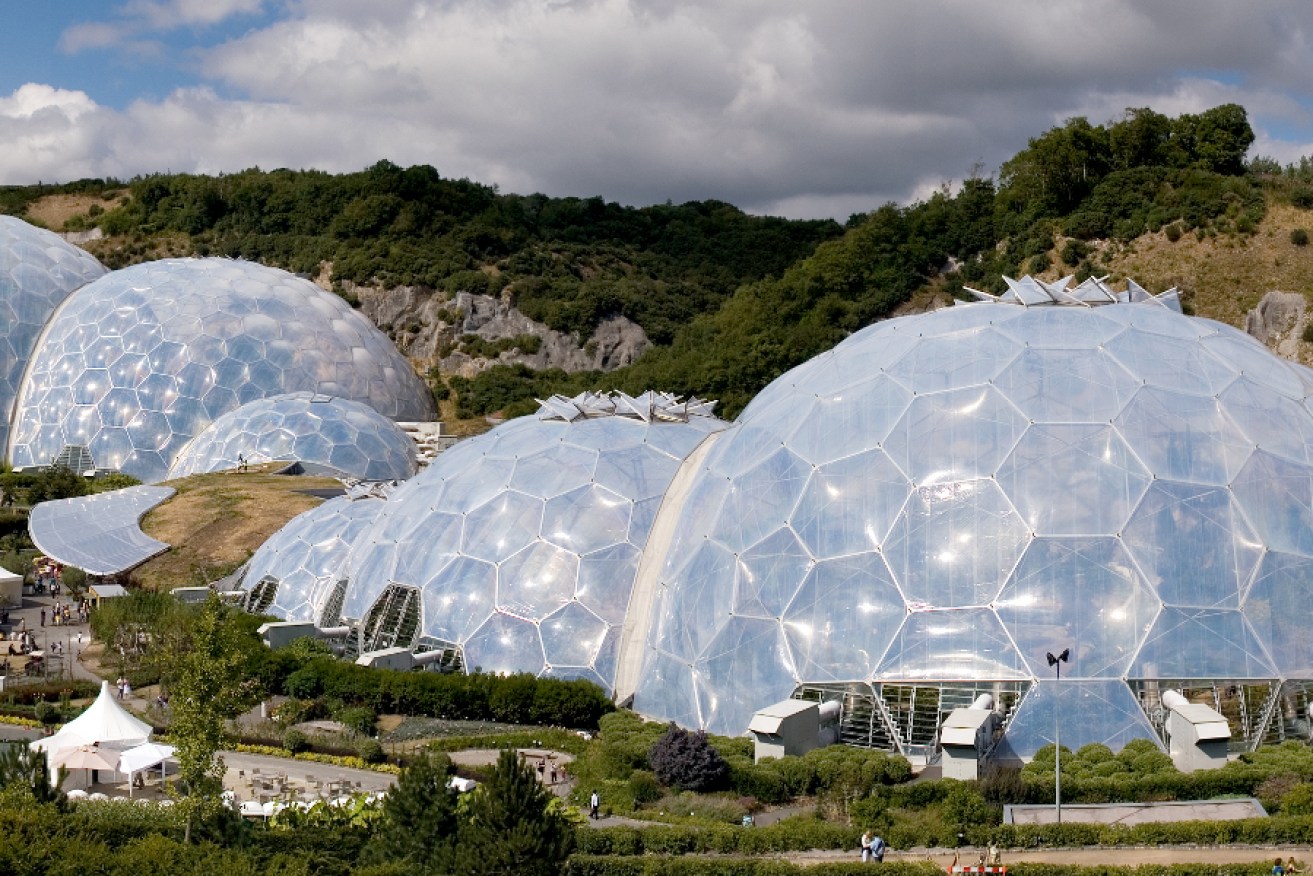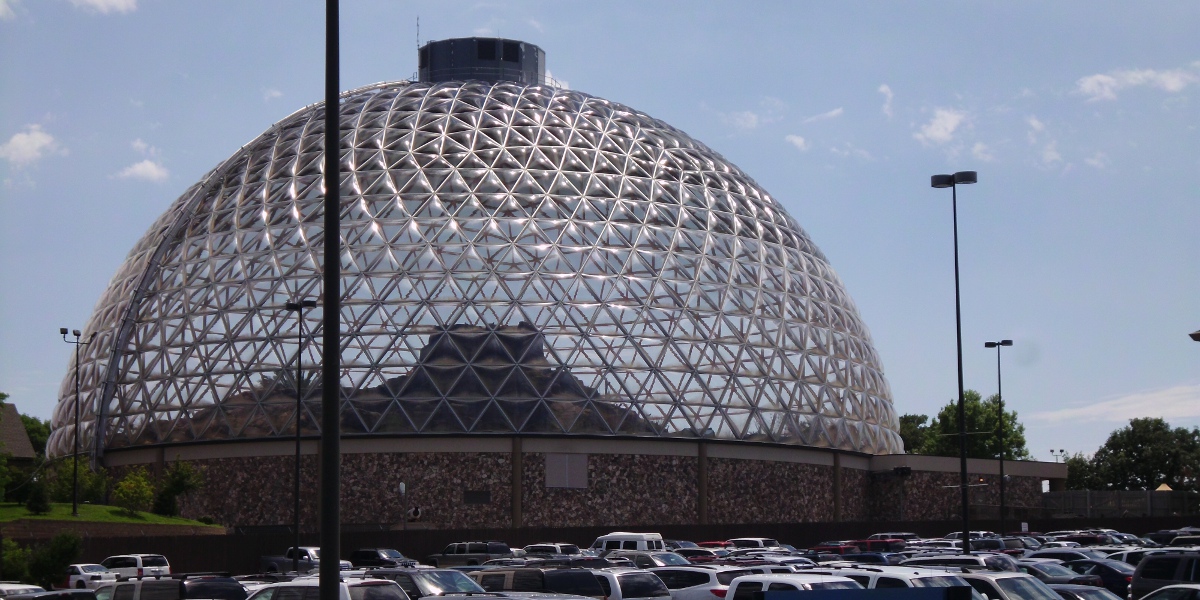Science fiction’s favourite building

Artificial biomes house thousands of plants from around the world in the Eden Project in Cornwall, UK.
From hippie houses and kids’ play frames to military radar stations and mountaineering tents, the geodesic dome has fascinated people as a way of building.
Why? Simply because it is so extraordinarily different from standard forms of shelter.
The latticework frame of a geodesic dome is at once an incredibly efficient structure and an exotic, beguiling form.
What is a geodesic dome?
The term “geodesic” comes from geodesy, the science of measuring the size and shape of Earth.
A geodesic dome is a partial-spherical shell structure that is composed of triangular elements derived from geodesics.
The attraction for building is that geodesic domes are both strong and light. The triangulated three-dimensional skin is extremely structurally efficient. The struts that make up the dome work in both compression and tension – spreading the forces on the structure. That means a geodesic dome can be built to span a large distance and be very strong, with a lot less material.
The small scale of the components needed to build a geodesic structure is also an attraction. The struts and connectors for a dome can often be made and transported to a site much more easily than conventional columns and beams.
A design classic?
Given geodesic structures derive from regular geometric forms that can be recognised in nature, it might be argued that the geodesic dome wasn’t “designed” by anyone.
But the dome found a charismatic champion in American architect Buckminster Fuller. He wasn’t its inventor, but he did the most to systematise and develop the mathematics for building geodesic domes, even taking out a patent in 1954.
“Bucky” was himself a phenomenon – an inventor and visionary whose enthralling, rambling lectures spanned technology, engineering, environmentalism, philosophy, life and the universe.
He caught the attention of everyone from military generals to hippie commune dwellers.
Bucky pitched the geodesic dome as a device for freedom: a wholly new form of lightweight structure that, theoretically, could be placed anywhere.
Largely through his non-stop promotion, the geodesic dome’s appeal grew dramatically through the 1960s and ’70s. Domes were put to use by governments across the world as weather stations, long-range radar stations and storage depots.
Fuller even designed the US pavilion at the 1967 World Expo in Montreal as a 76m-diameter geodesic dome. Its adventurous design and engineering, like that of the Epcot Center’s “Spaceship Earth”, opened in 1982, offered a thrilling vision of the future.
The hippie dome
For all the visual drama and excitement of such “space age” structures, the geodesic dome’s most powerful impact has been as a symbol of alternative living.
It was made popular by publications such as Lloyd Kahn’s Domebook 1 (1970) and Domebook 2 (1971), and by the 1970s no self-respecting counterculture radical would be seen without the components of a dome in the trunk of their VW Beetle.
Geodesic domes gave form to desires for living differently. They were understood to be an architecture that fused a sense of the self with a sense of the cosmos.
Where corners and square buildings restricted the mind – domes supposedly expanded them.
Domes became common first shelters in alternative, self-build communities from Nevada in US to Nimbin in Australia, where they were intended to help create communal, self-supporting, non-hierarchical ways of being.
An eternal curiosity
They also leaked. A lot.
They over-heated, and people got cranky living together without walls.
This was not the connection with the universe that most had imagined. So the fad passed and we’re not all living communally in domes delivered by helicopters.
Still, it wasn’t the end for this quixotic adventure in design. It’s not hard to find examples of its enduring appeal.
The geodesic dome is a recurring subject of student architecture projects.
My daughter’s school playground features a geodesic climbing frame and a whole new generation is discovering the dome as a crucible for alternative living.
The geodesic dome still fascinates, speaking to us of science-fiction futures and spaces of transformative living.
Lee Stickells is the Head of Architecture at the University of Sydney. This article was first published on The Conversation.







